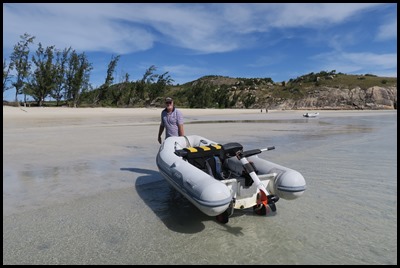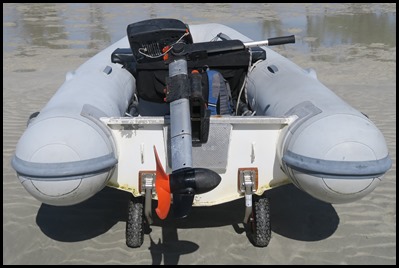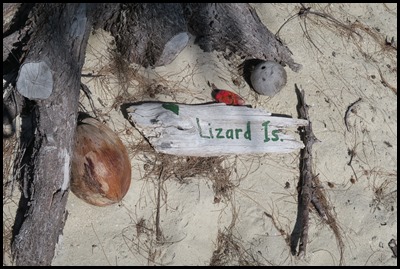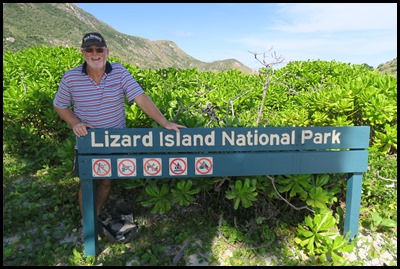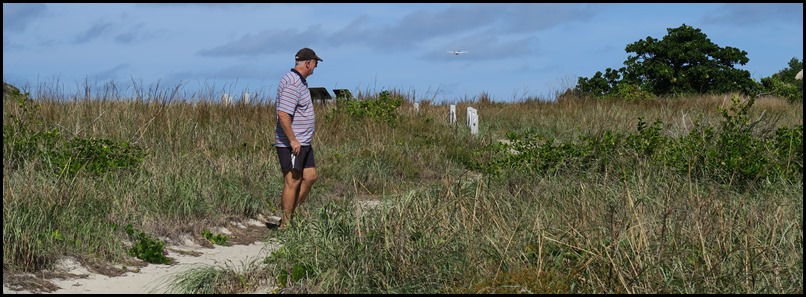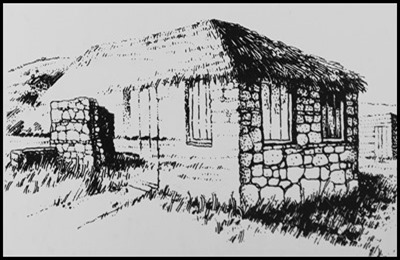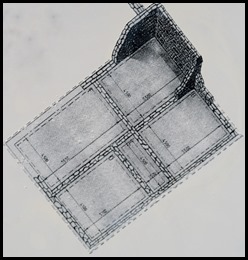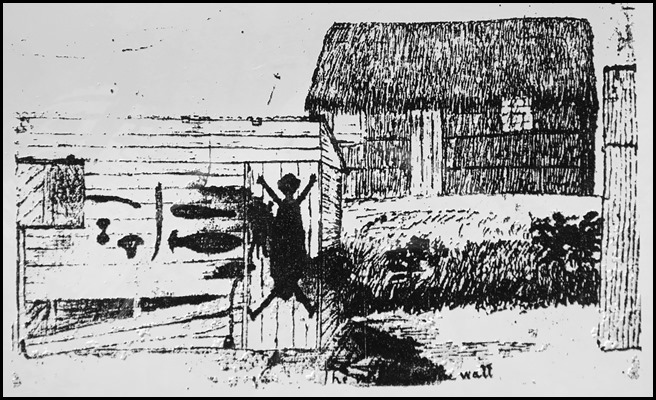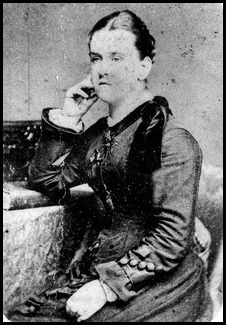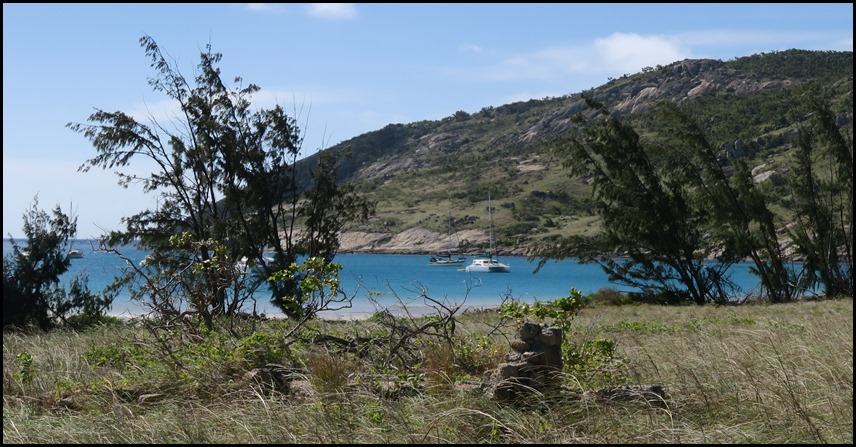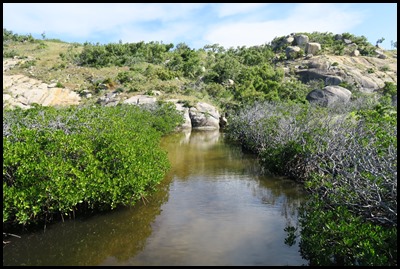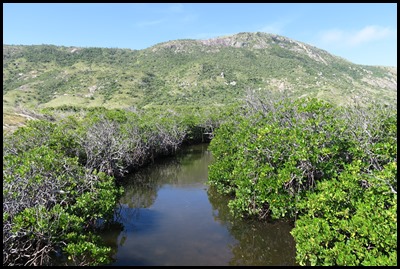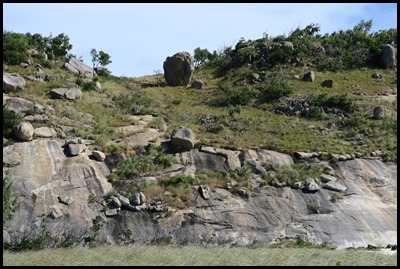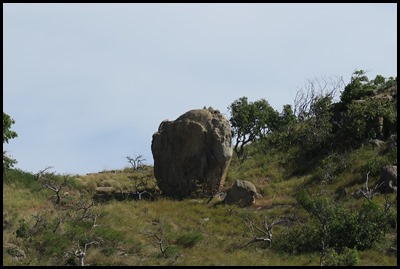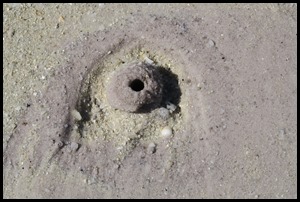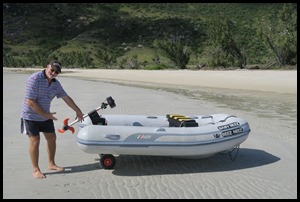Lizard Ashore

|
Lizard
Island Ashore
After settling at anchor and a stout breakfast, Bear launched Baby Beez for her first trip ashore since the skipper fitted her new wheels. Well, no sooner than I jumped out than the man had clipped the wheels down into amphibious mode and he near ran her up the beach. Very impressive sight.
Trinkets under a tree and the National Park sign.
In 1939, Lizard Island and all of the islands in the group were declared a national park, administered by the Queensland Parks and Wildlife Service. The island is also part of the Great Barrier Reef Marine Park, administered jointly by the Great Barrier Reef Marine Park Authority and the Queensland Environmental Protection Agency. Permits are required for all manipulative research in the Lizard Island Group and the waters surrounding it. Technically we are on the Great Barrier Reef in Queensland, 1624 kilometres northwest of Brisbane and part of the Lizard Island Group that also includes Palfrey Island, all within Cook Shire.
Geology: Lizard Island is a granite island about 10 square kilometres in size, with three smaller islands nearby (Palfrey, South and Bird). Together these islands form the Lizard Island Group and their well-developed fringing reef encircles the ten metre deep Blue Lagoon. Aboriginal: Lizard Island was known as Dyiigurra to the Dingiil Aboriginal people call the island Jiigurru.
European: The name Lizard Island was given to it by Captain Cook when he passed it on the 12th of August 1770. He commented, "The only land Animals we saw here were Lizards, and these seem'd to be pretty Plenty, which occasioned my naming the island Lizard Island." Cook climbed the peak on Lizard Island to chart a course out to sea through the maze of reefs which confronted him and the island's summit (394 metres) has since been called ‘Cook's Lookout’, our quest for tomorrow morning before we leave in the afternoon. By the 1860’s the island was being used by sea cucumber fishermen who found that the waters contained substantial quantities of the creature which was a popular delicacy in Asia.
A sandy track leads to the ruin known as Watson’s Cottage.
Bear watches a plane flying away. Robert Watson and George Fuller established a
beche-de-mer fishing operation here in 1879, using South Sea Islander labourers
and Chinese servants. Soon afterwards, Robert married Mary and brought her to
the island to live in a modified cottage,
abandoned by the crew of the Julia Percy. Her new home was surrounded by
smokehouses, storehouses, a farm and a garden. They did not know that the island
was sacred to the Dingaal Aboriginal people.
In October 1881, Captain Watson and his partner George Fuller sailed
north to fish the sea cucumbers at Night Island, leaving Mary alone with the two
Chinese servants and her baby son, Ferrier. After an uneventful month one of the
servants went to the farm and was never seen again, although his pigtail (it is
assumed) was found on the mainland months later, which suggests his ultimate
fate. Mary recorded in her diary “Ah Leong killed by the blacks over at the
farm. Ah Sam found his hat which is the only
proof.” Aborigines
kept Mrs Watson and her remaining servant under surveillance and eventually
ambushed the servant, spearing him twice before he escaped back into the house
while Mrs Watson fired several shots at them. Badly wounded, the faithful
servant helped Mary launch a beche-de-mer boiling
tub in which, together with the baby and a few basics, they cast off to
become a plaything of the trade winds. After grounding on a reef and later
leaving an island because of the presence of blacks, they eventually lodged on
Watson Island (named later in her honour), “Ah Sam and self very parched.
Ferrier showing symptoms. No rain....... nearly dead with thirst.” They
perished nine days after leaving Lizard Island. Sketch by a sailor from HMS Conflict
during the search for Mary Watson. Their
bodies were found three months later on an island in the Howick Group, along
with Mrs Watson's diaries. One
is about her last nine months on Lizard Island and the other is notes
documenting her last days. Her diaries, the iron tub and paddles are
preserved in the Brisbane Museum, they are a stirring memento to a brave and
remarkably placid woman. In
retaliation to the attack, a punitive
expedition was mounted, but the Aborigines they
encountered were almost certainly the wrong group. Watson and Fuller abandoned
their enterprise and Watsons Bay was never again permanently
occupied. Portrait
of Mary Beatrice
Watson. Mary’s
Legend: Immediately
after Mary’s death, her legend as tragic heroine – “a beacon of light to
guide the steps” of other pioneering women – began. The legend became linked
with this ruin, overshadowing its earlier history. In 1860, nineteen years before
the Watsons arrived, the crew of the Julia Percy – eighty men, women and
children, including many Chinese and South Sea Islanders – set up base in this
bay for processing sandalwood, turtle shell and beche-de-mer. The bay
“assumed the aspect of a small village from the number of grass houses that
had been run up”. (MacGillivray, Julia Percy’s naturalist). After fifteen
months of deaths, hardships and poor returns the crew abandoned the base. “A
stone building, intended as a storehouse and manager’s residence, was left
unfinished.” Beez
Neez
and Hybresail sit quietly at anchor behind the
stone ruin
which is popularly believed to be Mary’s cottage but archaeological research has
recently cast doubt over its origins. Its large size and stone construction
appear to conflict with Mary’s description of her cottage – “thatch
walls” and “three rooms” – in her diary entries. If not her home, it is likely that
the building was part of the Watson’s fishing operation. For now, Watsons Bay
retains its secret and the ruins have been dealt severe blows with the passing
of many a storm and the odd cyclone. Mrs.
Watson was only twenty one when she arrived at Lizard Island and is famed for
her courage and endurance. We
walked past the ruins and onto a boardwalk that crossed a mangrove patch.
Looking left
and right.
Granite
boulders somehow stand, some at impossible
angles. An
impressive creature mound
on the beach, but not half as impressive as the racing snake
that nary ran down the beach with Baby Beez.
New wheels captain, I here you ask..... Very effective with the light, electric motor. The real
test will be when we put the heavy Yamaha on.
Ever the cautious one, well, I’m thrilled with them, even I can pull – but not
up too steep an incline please...........and it’s a lot of fun going
downhill.
ALL
IN ALL A LOVELY ISLAND
WELL LAID OUT AND GREAT
FUN |
